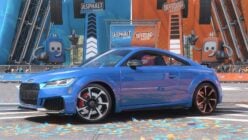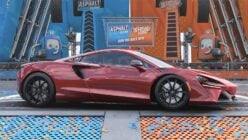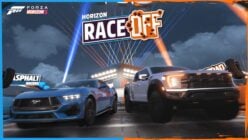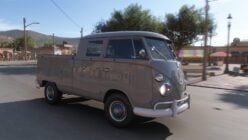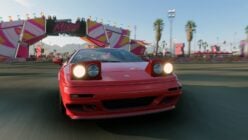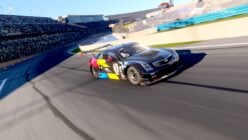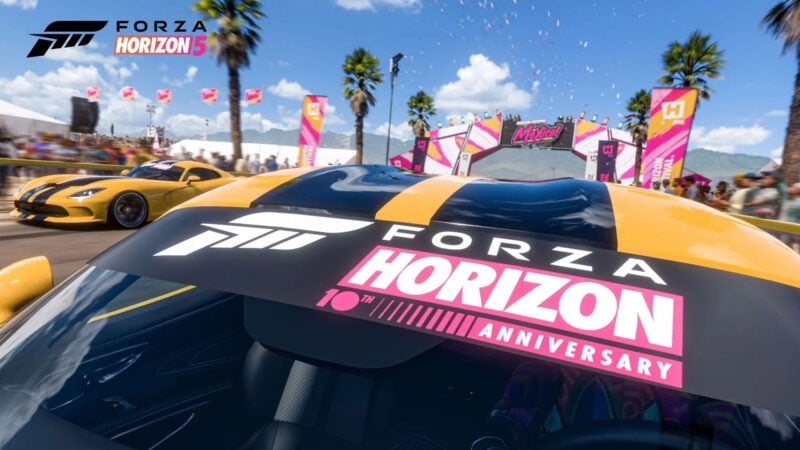
Today marks exactly a decade since the very first game in the Forza Horizon series became available for the first time, for players in North America and Australia.
Ten years on from Forza Horizon, which launched on October 23, 2012, the series is now on its fifth game — which is currently celebrating the milestone with its Playlist events and a special “Story” covering the history of the series.
The first title caused quite a stir when officially revealed at E3 in June 2012. Turn 10 had produced a total of four titles in the Forza Motorsport series by that point, and a brief tease from creative director Dan Greenawalt (and a short video featuring the Chemical Brothers) aside, nobody quite knew what to expect.
An open-world title using Forza Motorsport 4’s vehicle assets, set in Colorado and developed by an external, UK-based studio — Playground Games, which drew staff from several racing game developers in the UK — was probably not high on anyone’s list of expectations.
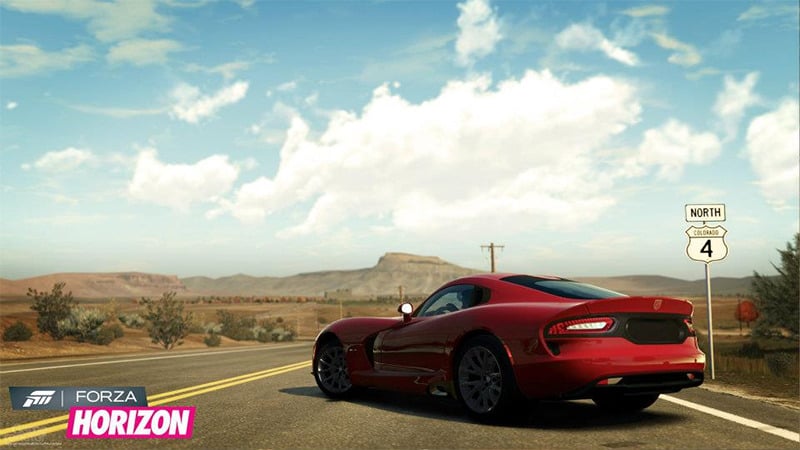
Nonetheless, that’s exactly what Forza Horizon was. The title took the seriousness of the Forza Motorsport series and draped it in a relatively thin plot — although a popular fan theory holds that the player character dies at the end following the final race with Darius Flynt — along with a vast landscape.
Instead of the various race tracks, the open road became your track as you fought from 250th out of 250 and your trusty Volkswagen Corrado up to the top of the Horizon Festival rankings, collecting wristbands on the way.
Although much of the off-road areas of the map were fenced off, players could drive on up to 65 different surfaces (we’ve never found out what they all are!), on the road and on certain unpaved routes with a full day/night cycle.
As well as racing, players could earn points and cash for setting records through speed traps and performing various stunts: drifting, near-misses with NPC cars, smashing signs, and so on. Multiplayer events were also a key feature, including car-based games like cat and mouse.
Of course vehicle customization was a major feature too, with players able to upgrade their cars — with around 140 available in the base game, expanding over time with DLC packs — with new parts or apply new paint colors and liveries.
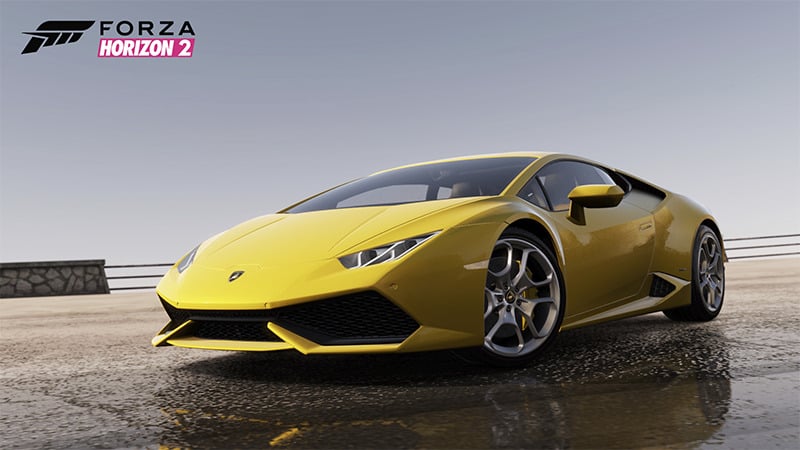
2014’s Forza Horizon 2 made two major changes. The first was in bringing the racing action across the Atlantic Ocean to a new venue based around the Mediterranean coast of France and Italy, but more importantly it removed the barriers; FH2 was now truly open-world.
The game also brought dynamic weather for the first time, adding a new dimension to your races — along with a bigger map (with more of it to drive on!) and bigger car list and new physics courtesy of FM5.
It only got even larger too, as FH2 saw the first map expansion: Storm Island. This brought a new playable area to the game, as well as close to 100 more races, new game modes, and a bunch of cars.
The title also saw one of the more controversial directions in the series. As PG was developing FH2 for the new Xbox One consoles, Sumo Digital was creating an Xbox 360 port. This had a number of concessions for the older hardware, and ultimately resulted in two very different games.
One major boost though came by way of microtransactions, or rather the lack of them. While FH1 had used the cash-for-tokens-for-cars system, FH2 ditched it — and moreover made any paid-DLC cars free to buy within the game.
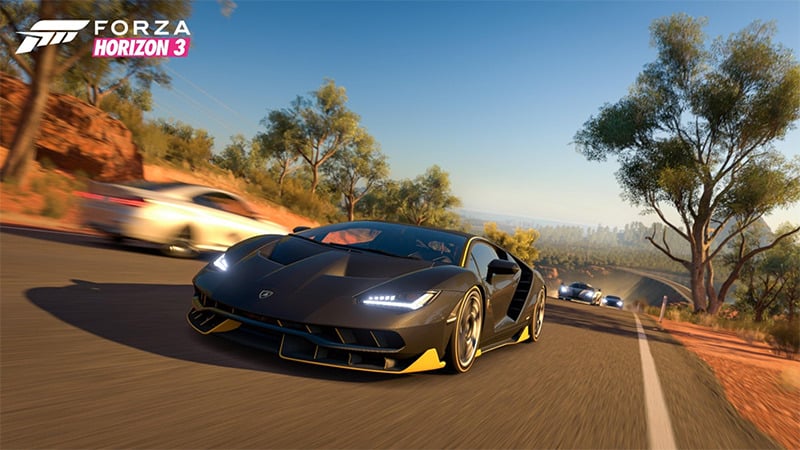
FH3 represents the moment where Horizon finally hit its stride, evolving from a FM-like title set in a patch of the real world into a full-on celebration of car culture. The story this time was that you were the host of the festival, tasked with expanding it in Australia, rather than a mere competitor.
“Expand” being the key word there, as FH3 was considerably bigger and more varied than before. Its Australian venue was twice the size of FH2’s Mediterranean, and the landscape rather different. The Festival map included desert (the infamous Outback), beaches, rainforests, Australia’s wine country, and Surfer’s Paradise.
The car list was up to over 350 vehicles now and with greater customization options — including bodykits — than ever before. Australian cars were naturally a key focus, but the list also included “Horizon Edition” cars: pre-tuned vehicles with skills bonuses. Personalization extended to the player for the first time too, adding selectable preset avatars.
You could even customize races. The new Blueprint mode allowed you to chop and change features of races including eligible cars, weather and light conditions, NPC traffic, and so on. A new weekly “Forzathon” challenge was also introduced, allowing players to win special vehicles not available elsewhere.
Expansions went truly other-worldly too; Blizzard Mountain brought in some much-needed wintry weather, but it was the Hot Wheels expansion that truly underlined the game’s “fun” credentials.
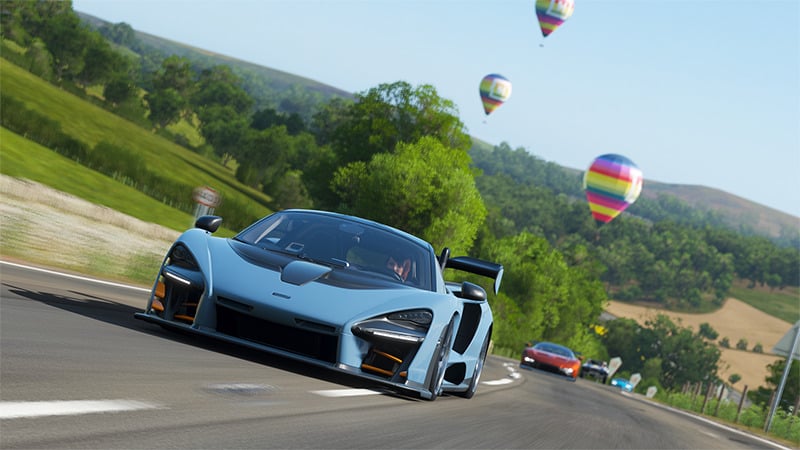
Horizon 4 moved the action back to Playground Games’ home country, with the United Kingdom hosting the Festival, and though it wasn’t necessarily bigger — the map was approximately the same size — it was denser.
There was more to do than ever before, with the title combining everything that had gone before into one. More then 500 cars at launch was only the tip of the iceberg; the game now sported close to 100 different events in the various disciplines, PR stunts, new stories (including a Top Gear tie-in; well, it is set in the UK after all), and more.
That included a new weekly “Playlist”, expanding on and encompassing the Forzathon from FH3. Players now had a suite of challenges to take part in each week, with bonus cars and items for completing each — and for certain percentages of the entire list.
This tied into a new seasonal dynamic, which saw the weather cycle through the four seasons every four weeks (again, typical of the UK). That opened up, or limited, areas of the map for the first time, with the lakes freezing over in winter and thawing out later.
Players could also create their own courses for the first time, with the Blueprint mode expanding to allow you to drive a route of your choice and save it as a new track. Super7 came along later in the game’s life, setting players the challenge of driving other people’s custom courses.
Expansions also included the new Fortune Island map, introducing the new Trailblazer event type, and an entire world made of plastic building bricks with LEGO Speed Champions. Avatar customization hit new heights too, with clothing items and emotes.
While FH3 was a step up in terms of visuals and lighting, FH4 moved things on further. At launch the title supported 4K on Xbox One X — FH3 had been updated earlier in the same year to take advantage — or 1080p at, for the first time, 60fps.
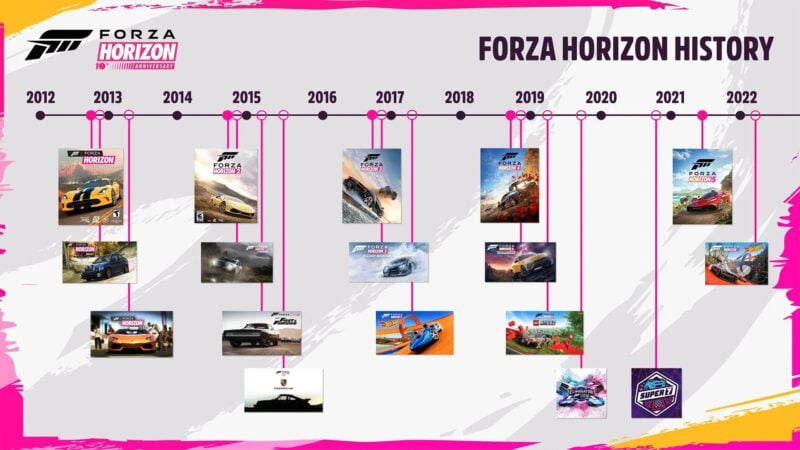
That brings us up to the present day, with Forza Horizon 5 launched in November 2021 — a year later than the established biennial pattern — again unifying all of the features of previous titles, expanding the map, and relocating to Mexico.
With the underlying technology of the Motorsport games, upon which Horizon is based, set for a massive update with 2023’s Forza Motorsport, it’ll be interesting to see where Forza Horizon 6 will go. We said in our FH3 and FH4 reviews that it was difficult to know how Playground Games plans to improve, and we can’t wait to find out..
Happy tenth birthday, Forza Horizon!
See more articles on Forza Horizon.



